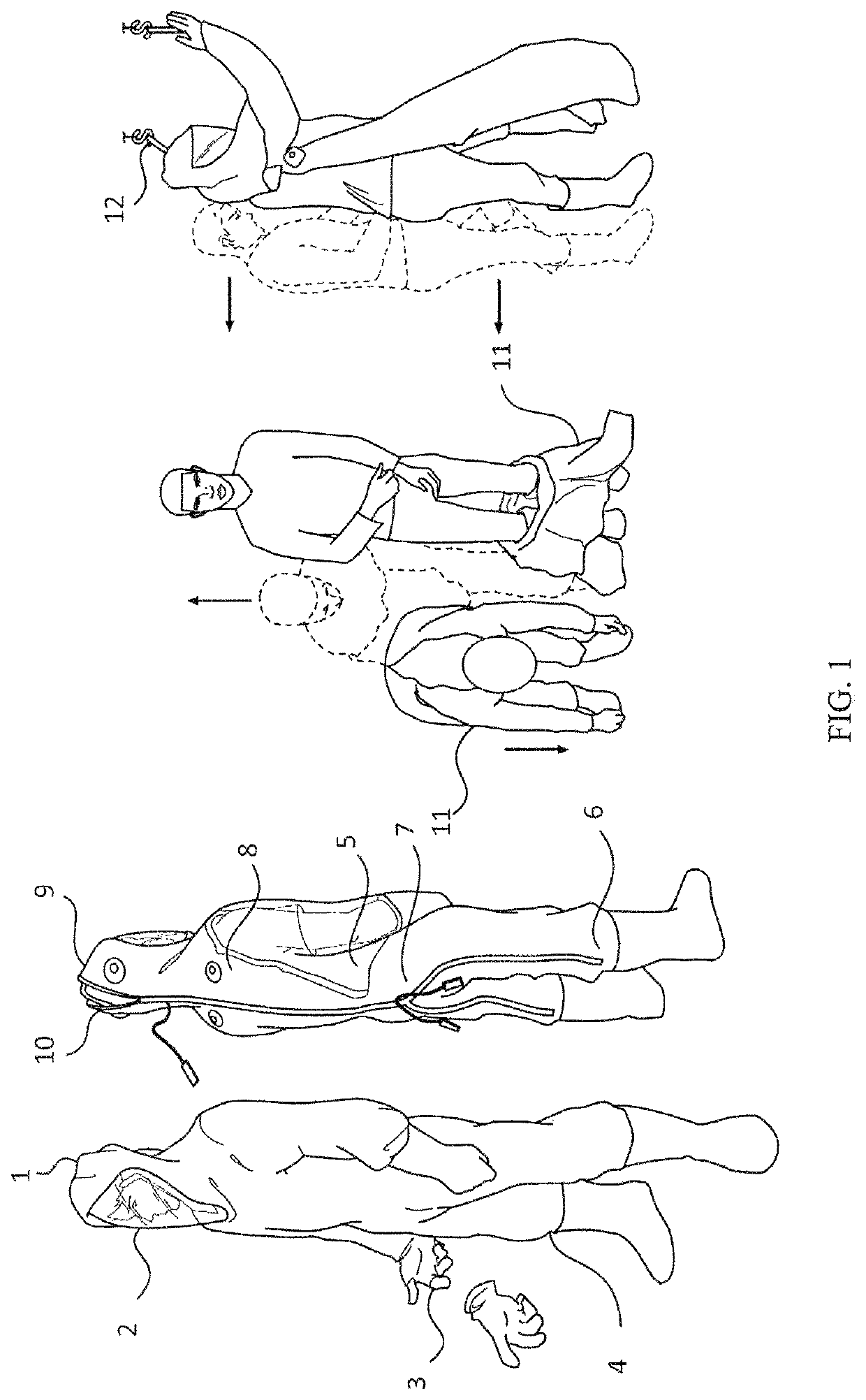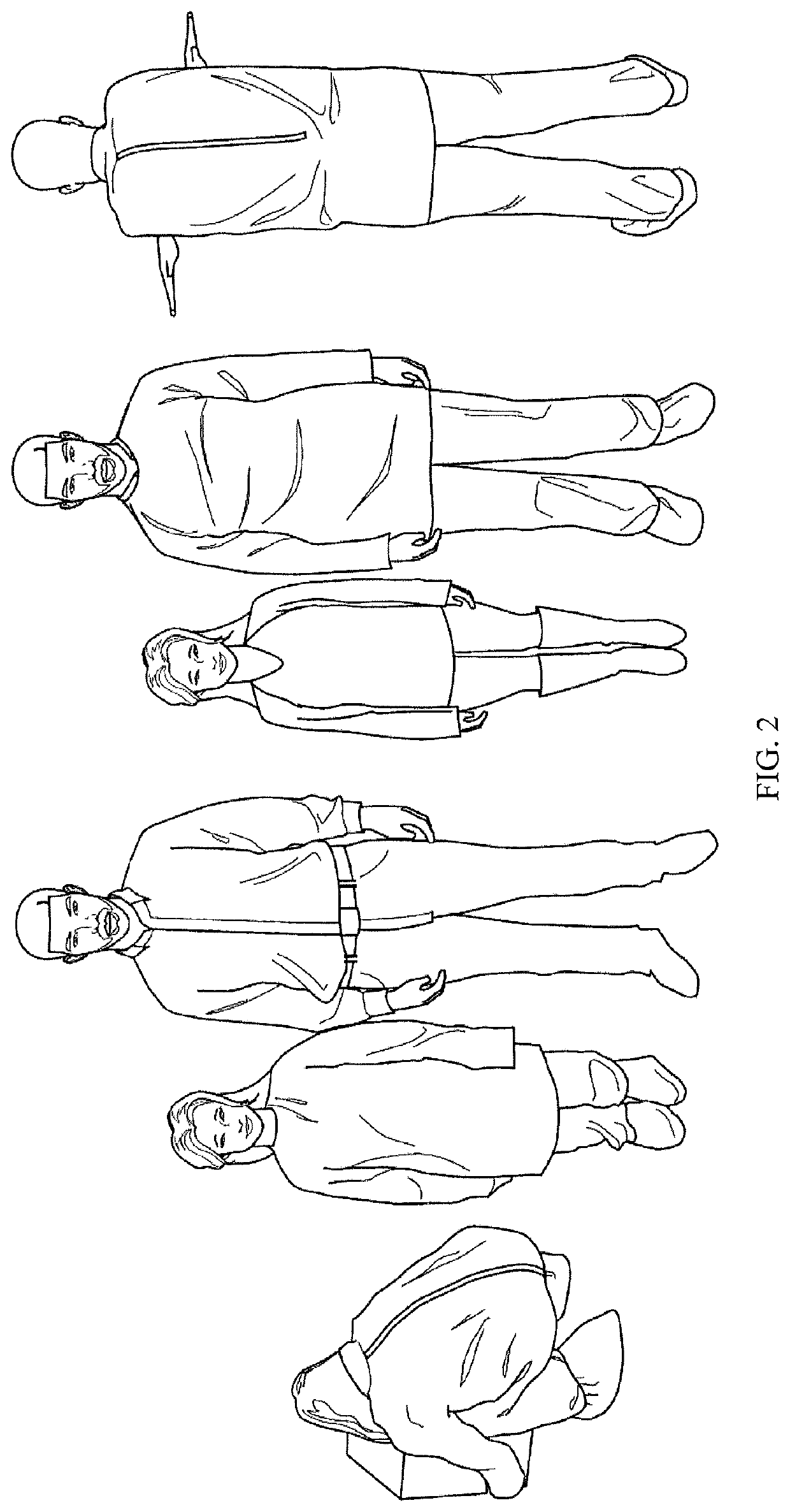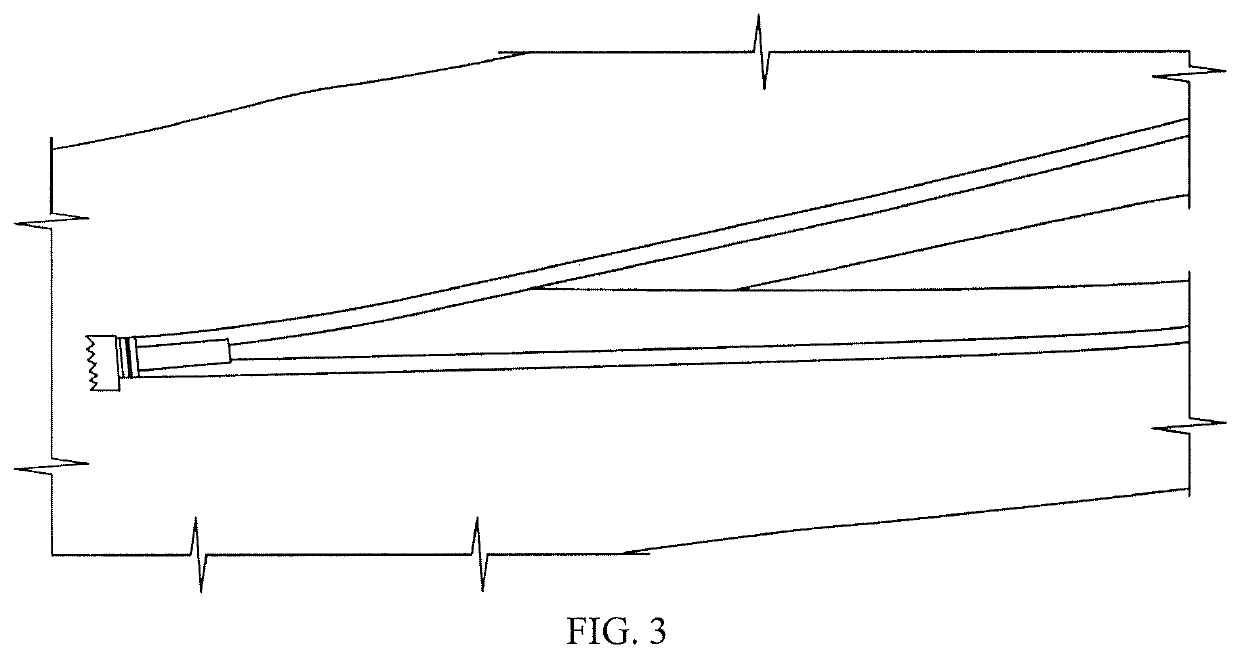Suit designs and doffing methodologies for personal protective equipment to prevent the spread of infectious agents to healthcare workers
a technology for personal protective equipment and infectious agents, applied in the field of bodysuits, can solve the problems that current anti-ebola personal protective equipment (ppe) poses significant risks, and achieve the effects of reducing the complication of doffing, and reducing the risk of contamination
- Summary
- Abstract
- Description
- Claims
- Application Information
AI Technical Summary
Benefits of technology
Problems solved by technology
Method used
Image
Examples
example 1
[0076]FIG. 1 shows a rendering of Comprehensive Anti-Ebola PPE design improvements. The suit in FIG. 1 has: 1, an integrated hood and shield with more continuous coverage and fewer components to doff; 2, a large clear area on the hood with improved visibility and where more of the user's face is visible for a less intimidating appearance; 3, fingerless glove liners integrated into the suit for easier removal of outer gloves; 4, baffles at openings where extra material under the seams adds a second layer of protection; 5, a wicking inner layer worn under the suit with additional passive cooling and improved comfort; 6, breakaway leg seams with tabs that rip the legs open in the back of the suit to allow the user to easily step out of suit; 7, a rear zipper with long pull tabs that provide suit openings in a low-contamination area, for fewer leaks and contact when doffing and where long tabs allow unzipping without assistance; 8, an integrated cooling / connection port for an external a...
example 2
[0119]The following example describes a body suit with all possible features as they would apply to a collared coverall, which is a full body suit that covers the torso, arms, and legs, but does not cover the head. They can also apply to a hooded coverall, or a suit that covers the torso, arms, legs, and head. The coveralls may include integrated booties to cover the feet of the user. Additionally, the features are not dependent on one another, and can be implemented in many different combinations.
[0120]The features improve usability of the suit or simplify the doffing procedure.
[0121]One embodiment of the invention includes a collared coverall with a front seam for putting on the suit and taking off the suit if no contamination is present. It includes a rear exit seam for removing the suit after exposure to contamination. Pull tabs that attach to the rear seam to open it easily and cleanly, and flaps that enable the user to quickly remove the suit. The sleeve ends have attached fin...
example 3
[0134]Improved Coverall
[0135]The Improved Coverall is a rear-entry coverall designed to decrease the time and difficulty of doffing PPE.
[0136]Features of the Improved Coverall include: an entry and exit seam moved to rear of coverall; a standard zipper protected by an adhesive secured double storm flap; over the shoulder doffing pull-tabs; fingerless gloves; and dual color fabric—outer and potentially contaminated areas are yellow, inner areas are white. FIG. 9 shows a picture of the fingerless gloves with three symmetric bands, 91, passing through the fingers of a user. These elastic bands, 91, are designed to be ambidextrous. Embodiments can also contain 4 or more elastic bands. FIG. 10 shows the doffing process for a rear exit zipper and pull tabs. In FIG. 10, a user pulls tabs away from his / her body so as to open the rear exit seam of the suit.
[0137]The zipper is protected by a double storm flap to prevent contamination of the zipper area and to prevent accidental unzipping. The...
PUM
 Login to View More
Login to View More Abstract
Description
Claims
Application Information
 Login to View More
Login to View More - R&D Engineer
- R&D Manager
- IP Professional
- Industry Leading Data Capabilities
- Powerful AI technology
- Patent DNA Extraction
Browse by: Latest US Patents, China's latest patents, Technical Efficacy Thesaurus, Application Domain, Technology Topic, Popular Technical Reports.
© 2024 PatSnap. All rights reserved.Legal|Privacy policy|Modern Slavery Act Transparency Statement|Sitemap|About US| Contact US: help@patsnap.com










